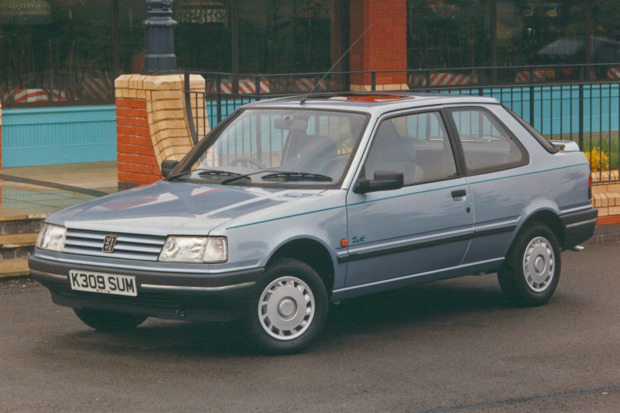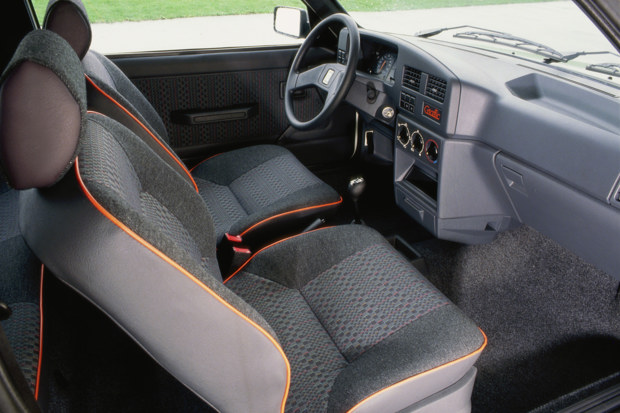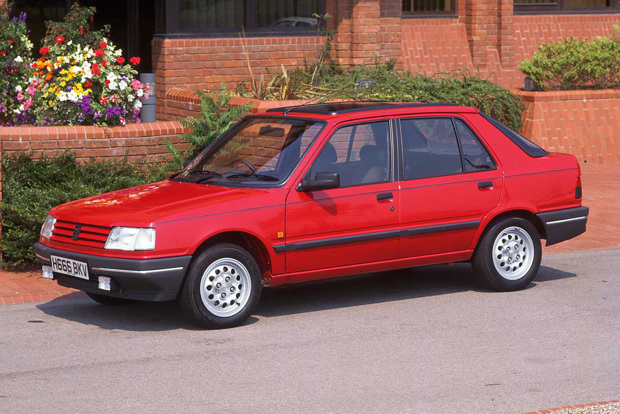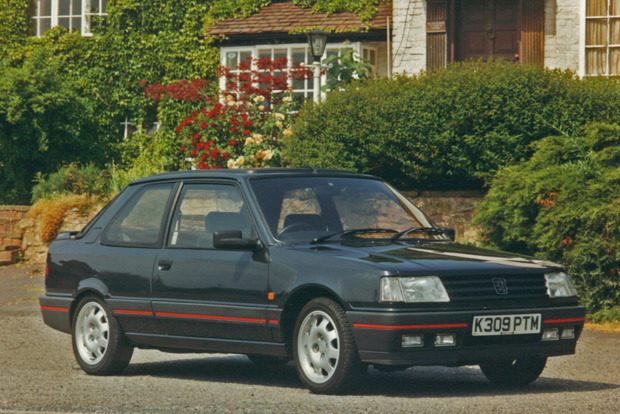Monday Motoring Classic: Peugeot 309

Component sharing and building cars to a budget have long been hallmarks of mainstream car manufacturers. The fact that Peugeot managed to keep a completely different identity between the Peugeot 205 and the Peugeot 309 when the two shared so much in common is little short of astonishing.
But then, the Peugeot 309 was never supposed to be a Peugeot in the first place. The French manufacturer’s line-up was undergoing a renaissance, thanks to great handling and refinement and some striking Pininfarina exterior designs.
The brand’s sister company, Talbot, was urgently in need of some similar magic. Talbot's core models - the Horizon, Alpine, and Solara - were all long in the tooth and funding was extremely limited.
A dedicated team of engineers and designers in Whitley, Coventry, was asked to look at a potential replacement for all three of the cars that would set the precedent for future Talbot models. But the budget was so tight that it had to use as many existing parts as possible.
Mechanically, the car would use the same Douvrin ‘suitcase’ engine as the Peugeot 205 for the smaller engined models, with the PSA XU 1.6-litre and diesels further up the range. The front and rear suspension, too, would be borrowed from the Peugeot 205.
Not content with that, the UK-based styling team also took the doors, from both three and five-door Peugeot 205 and incorporated them into a mid-size silhouette. The new car, the Talbot Arizona, was ready by late summer 1985.

At the same time, Talbot’s parent company, PSA, which already owned Citroen and Simca as well as Peugeot-Talbot, was looking at rationalising its number of brands. To cut a very long story short, just as the Arizona was due to be revealed, PSA took the decision to shelve the Talbot brand in Europe.
By that point, though, project C28 (as it was known internally) was pretty much complete. Canning it would be ridiculous, so instead Peugeot took the opportunity to launch the new car, badged the Peugeot 309 (to distinguish it from the still current Peugeot 305) as a hatchback alternative to their existing mid-size saloon and estate models.
Although not unattractive, the Peugeot 309 initially met with a mixed reception. The Renault-style wraparound rear glass wasn’t aligned with the rest of the Peugeot range styling, while the back light lenses were clearly very Talbot in their appearance.
Plus, the fact the car had been developed to a very strict budget, using the Peugeot 205 doors and running gear, meant that it would take a lot to convince the opinion formers that the Peugeot 309 was as good as Peugeot’s other cars.
Furthermore, approximately half of all Peugeot 309s would be built in the UK at Ryton-on-Dunsmore, Warwickshire, with the remainder being constructed at Peugeot’s Poissy facility in France.
The car was very much an Anglo-French collaboration, spawned from the ashes of the ill-fated Rootes Group and using borrowed parts. That perhaps didn’t give the Peugeot 309 the best start in life when it first rolled off the production line in November 1985.
But Peugeot needn’t have worried. Whether it was down to the fundamental brilliance of the Peugeot 205 or the fact that the Peugeot 309 was far better engineered than its critics expected is unclear. But what customers got was a great mid-size family car.

The slightly awkward looks were criticised by some, but it was far from hideous and in sportier or more upmarket trims looked smart enough. The small back doors on five-door models, a Peugeot 205 hangover, came in for some criticism in the press, but the flip side was a bigger than average boot.
Time also proved that the Peugeot 309 was exceptionally reliable, much like the Peugeot 205 and also like its smaller sibling, it was far more rust-resilient than its peers. Admittedly it didn’t have the cockroach-like survival ability of the Peugeot 205 bodyshell, but significant rust to the underbody or panels is, even today, very rarely a reason for a Peugeot 309 to meet its maker.
Performance car fans will also tell you that the Peugeot 309 GTi, launched in 1986, was the best hot hatch that Peugeot ever produced. The Peugeot 205 may have been the icon, but in terms of handling balance, poise and grip, the Peugeot 309 was the unsung hero.
For years, it lived in the shadow of the Peugeot 205 GTi. Indeed, many Peugeot 309 GTis lost their engines to Peugeot 205s that owners wished to convert from 1.6 into 1.9-litre models.
The irony, today, is that an unmodified and original Peugeot 309 GTi will probably sell for more cash than a Peugeot 205, simply down to the fact that they are so rare. Find one of the run-out Goodwood models, with its dark alloys and leather trim and you could be sitting on a future goldmine.
Lesser Peugeot 309s, meanwhile, make a great, inexpensive entry into quirky older car ownership. You’ll still pick up a tidy one for not much money and the simplicity of the running gear, whether it’s the earlier chain-driven ‘suitcase’ Douvrin engine, a post-1991 belt-driven TU, or one of PSA’s XU petrol or XUD diesel units, makes the Peugeot 309 a great family classic for the home maintenance enthusiast.
The Peugeot 309 was a car designed by committee, that shouldn’t really have been loved, but which served more than two million motorists well over eight years of production. Find a classic Peugeot for sale.

Is the 1990 Ford Escort Bonus a classic car?


